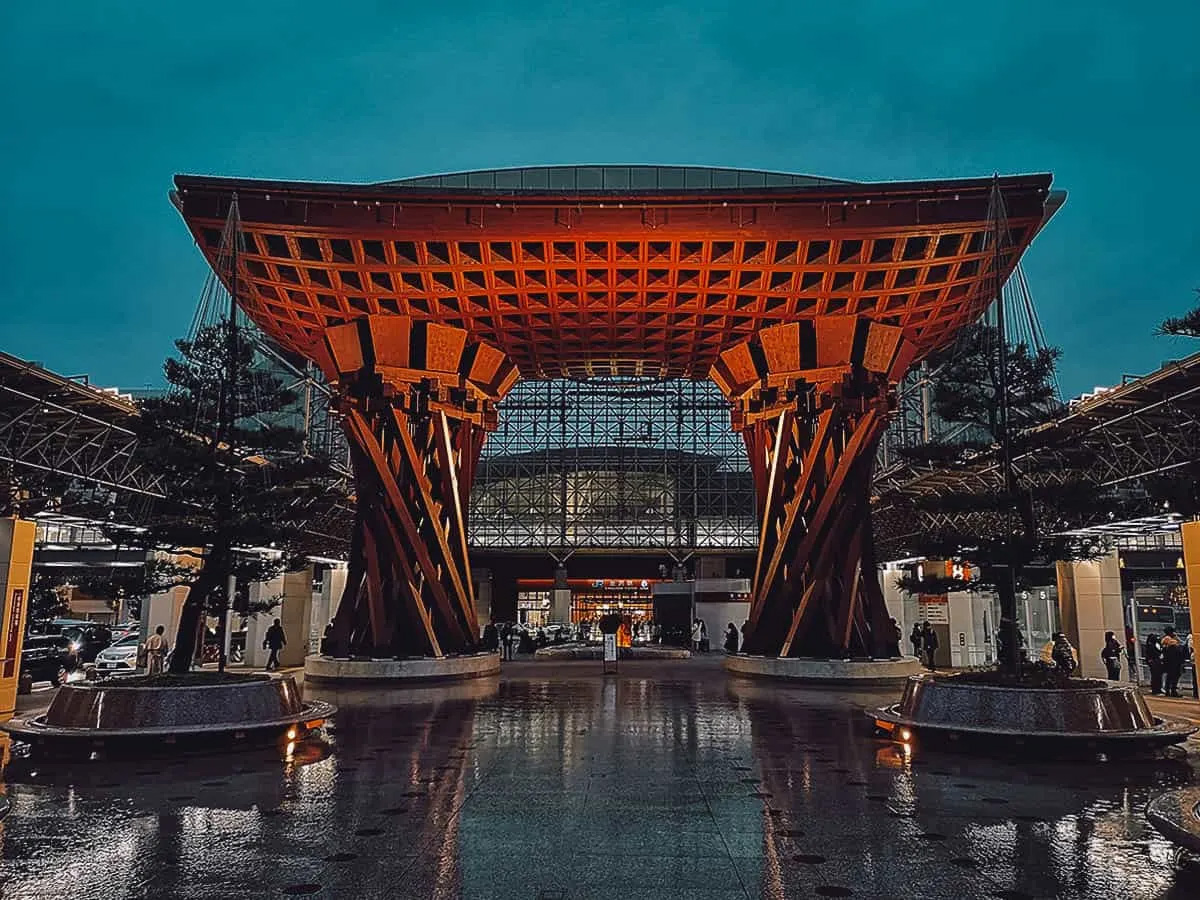SUMMARY HIGHLIGHTS
- Kanazawa is similar to Kyoto, but with fewer tourists.
- Kenroku-en is considered one of the three most beautiful landscaped gardens in Japan. I would agree.
- Kanazawa is a good base for making a day trip to Shirakawa-go.
I had just dropped off my bags at my hotel in downtown Kanazawa when I made a beeline for Nagamachi District. I had a fascination for swords and samurais as a kid so seeing an actual samurai district topped my to-do list in Kanazawa.
It was grey and rainy that winter morning so my initial impressions of Kanazawa, unfortunately, weren’t that great. It was gloomy and the streets were nearly devoid of people. It was a little depressing and put a damper on my excitement to explore this city often referred to as “Little Kyoto”.
But any stirring feelings of disappointment went away as soon as I turned that corner.
Entering the alleyway into Nagamachi District instantly took me to a different era. Everything looked different, even the light seemed to change. Walking into what felt like Edo-period Japan reminded me of why I was so enthusiastic to visit Kanazawa in the first place.
Welcome to old Japan, this neighborhood seemed to say. Welcome to Kanazawa.
VISIT KANAZAWA QUICK LINKS
To help you make the most of your time in Kanazawa, I’ve put together links to recommended hotels, tours, and other travel-related services here.
HOTELS
Top-rated hotels near Kanazawa Castle Park, one of the most centrally located areas in Kanazawa.
- Luxury: Korinkyo
- Midrange: Tokyu Stay Kanazawa
- Budget: Kanazawa Capsule Hotel Musashimachi
EXPERIENCES
- Sightseeing Tour: Kanazawa Half-day Historical Walking Tour
- Food Tour: Kanazawa Night Foodie Tour
- Tea Ceremony: Tea Ceremony at a Historic Tearoom in Kanazawa
- Cooking Class: Vegetarian Japanese Food Cooking Class in Kanazawa
OTHER SERVICES
GUIDE TABLE OF CONTENTS
KANAZAWA AT A GLANCE
Kanazawa is the capital of Ishikawa prefecture in Japan’s Chubu region. It’s affectionately called “Little Kyoto” thanks to the similarities it shares with its bigger and more famous sister in the Kansai region.
Like Kyoto, the city escaped destruction from air raids during the Second World War, leaving its samurai and geisha entertainment districts remarkably intact. Popular with domestic tourists but relatively unknown to many foreigners, Kanazawa exudes the charm of Kyoto minus the crowds.
Kanazawa is home to many interesting historical attractions and modern museums but it’s best known for Kenrokuen, a sprawling landscaped garden considered by many to be the most beautiful in Japan.
BEST TIME TO VISIT KANAZAWA
Like many destinations in Japan, Kanazawa is a year-round destination. It has a temperate climate so there’s no bad time to go, though spring and fall are typically the best times to visit thanks to the promise of sakura and autumn leaves.
I’ve been to Kanazawa twice in winter and found the experience rather gloomy and damp. I wasn’t lucky enough to catch snow but I’ve seen photos of Kenrokuen in winter and the garden looks even more beautiful covered in a fresh blanket of snow.
If you’d like to experience a festival in Kanazawa, then shoot for early June. The city’s biggest festival – Hyakumangoku Matsuri – is held over three days on the first weekend in June.
WHERE TO STAY IN KANAZAWA
The top attractions in Kanazawa are within a 3 km (1.9 miles) radius so I didn’t need public transportation. To make it easier to get around, I suggest staying in the area just west of Kanazawa Castle Park. This will put you in the middle of everything and still be close enough to JR Kanazawa Station.
You can visit Booking.com and Agoda for hotel listings around Kanazawa Castle. Here are some of the top-rated hotels in the area:
- Luxury: Korinkyo
- Midrange: Tokyu Stay Kanazawa
- Budget: Kanazawa Capsule Hotel Musashimachi
THINGS TO DO IN KANAZAWA
Visit Kenrokuen, One of Japan’s Most Beautiful Gardens
Kenrokuen is the number one attraction in Kanazawa. Together with Kairakuen in Mito and Korakuen in Okayama, it’s considered one of the three most beautiful landscaped gardens in Japan. In the eyes of many, it’s the best of the three.
The name Kenrokuen literally means “Garden of the Six Sublimities”, the six sublimities being spaciousness, seclusion, artificiality, antiquity, abundant water, and broad views. These are said to be the six essential attributes that make up the perfect garden.
Kenrokuen is beautiful at any time of the year, but even more so in the spring, fall, and winter seasons. It’s popular so I suggest going early in the morning to beat the crowds.
It’s easy to visit Kenrokuen on your own, but if you’d like to go on a guided tour, then you can book one through Magical Trip. Like the geisha and samurai districts, it’s a great place to visit wearing a kimono.
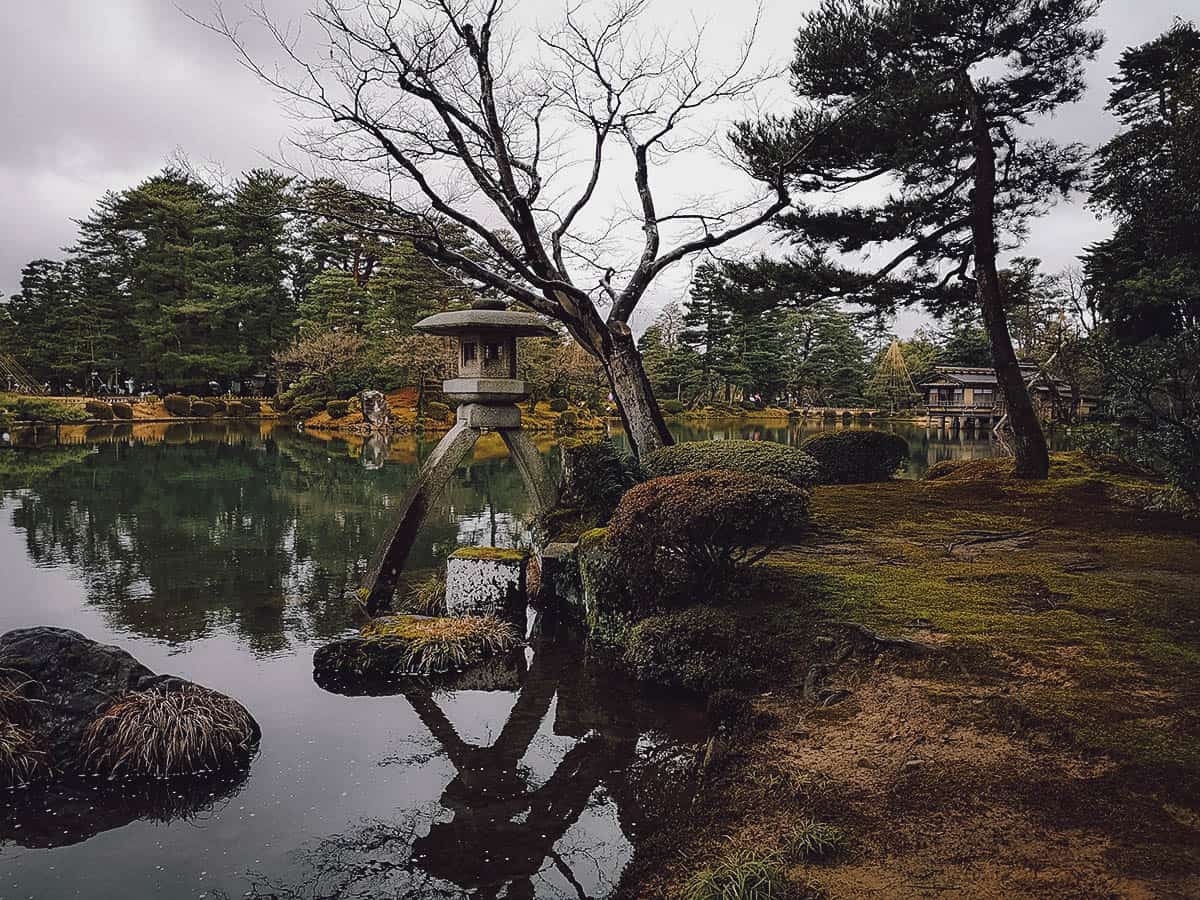
Explore a Geisha District
Exploring one of the city’s well-preserved chaya districts is one of the most popular things to do in Kanazawa.
A chaya is an exclusive type of restaurant or teahouse where guests are attended to and entertained by geishas. During the Edo period, chayas were clustered in designated entertainment districts. You can find these geisha districts in certain cities throughout Japan like Kyoto, Tokyo, Osaka, and Kanazawa.
Kanazawa has three well-preserved chaya districts – Higashi Chayagai, Nishi Chayagai, and Kazuemachi. Of the three, Higashi Chayagai is the biggest and busiest, with the most establishments you can visit.
The same Magical Trip tour that takes you to Kenrokuen will also take you to Higashi Chayagai. If you’re considering renting a kimono for more memorable pictures, then these traditional wooden houses make for an ideal backdrop.
For a truly special experience, some guests may want to visit a traditional teahouse in Higashi Chayagai, where you can interact and play parlor games with a geisha.
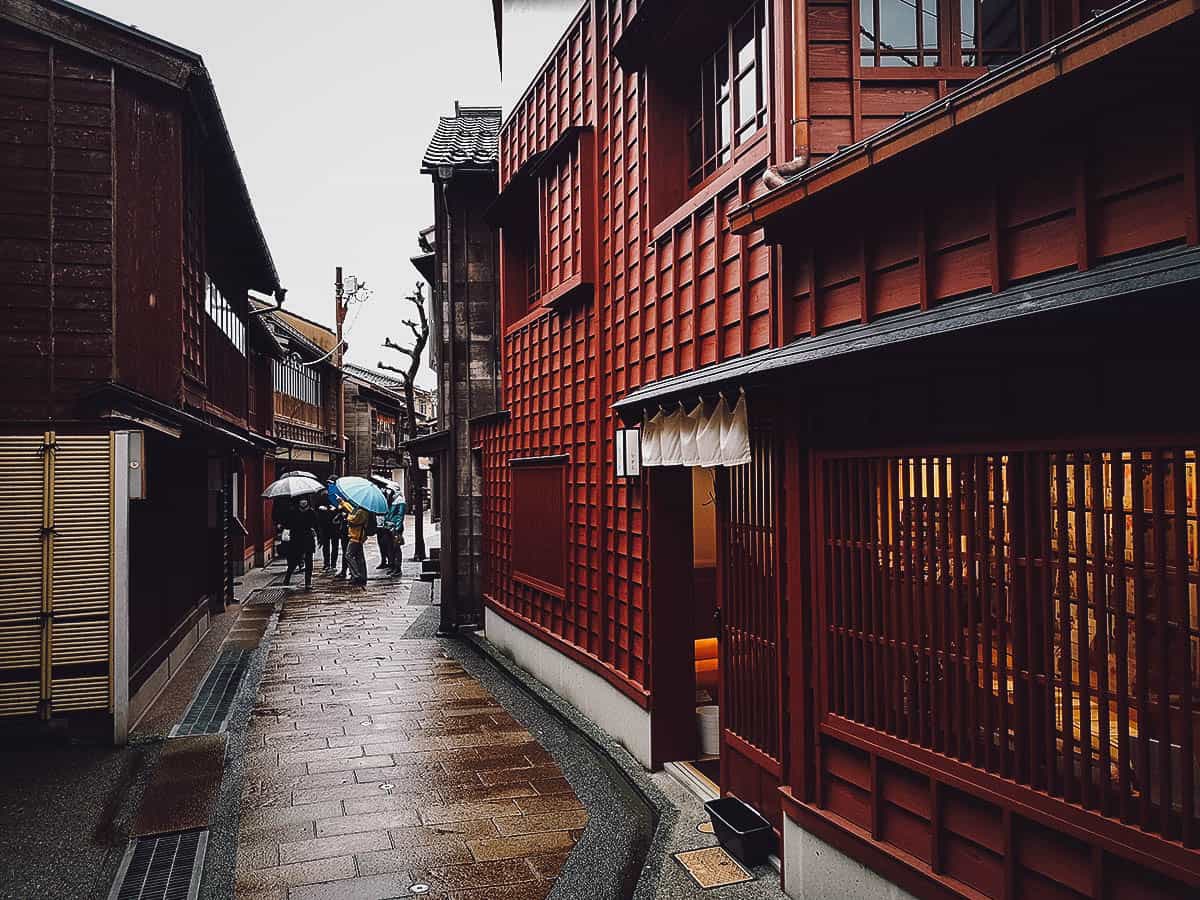
When you visit Higashi Chaya District, be sure to make a stop at Hakuichi. It’s a souvenir shop famous for serving gold leaf soft serve ice cream.
I don’t usually go on tours but I was glad to have a guide here. I learned that Kanazawa produces 99% of Japan’s high-quality gold leaf, with the name Kanazawa literally meaning “marsh of gold”.
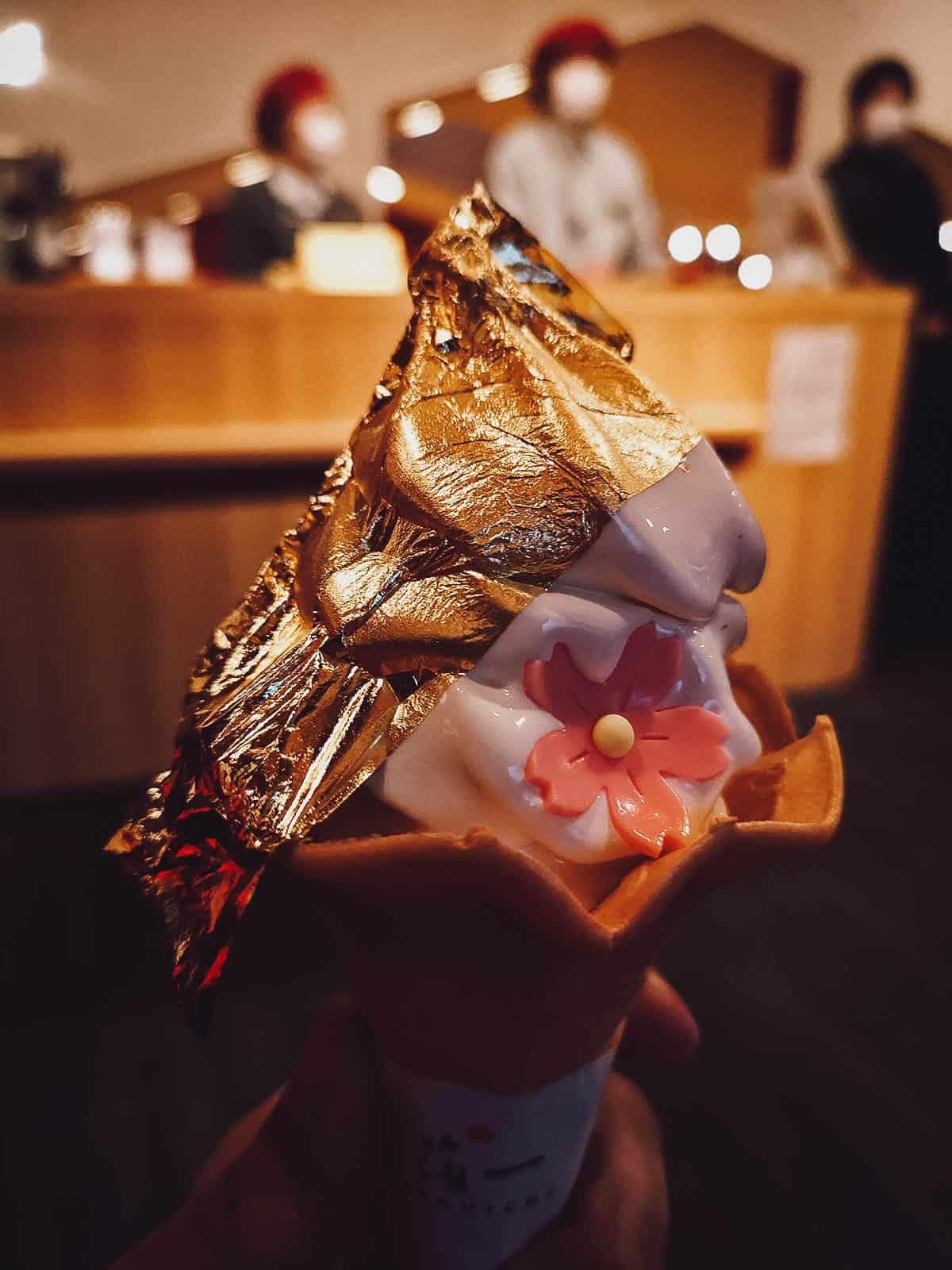
Explore Nagamachi Samurai District
If you grew up with a fascination for samurai culture, then you’ll get a kick out of Nagamachi District. Located near Kanazawa Castle Park, it’s where the samurai and their families used to live.
There are a few museums in Nagamachi but like the chaya districts, the main draw is the neighborhood itself. Noted for its preserved samurai houses with distinctive earthen walls, it’s a historic neighborhood that makes you feel like you’re in Edo-period Japan.
I went into a couple of museums but to be honest, I found them underwhelming, especially since many of the exhibits were only in Japanese. I think you’ll get a better appreciation for Nagamachi if you go on a guided tour.
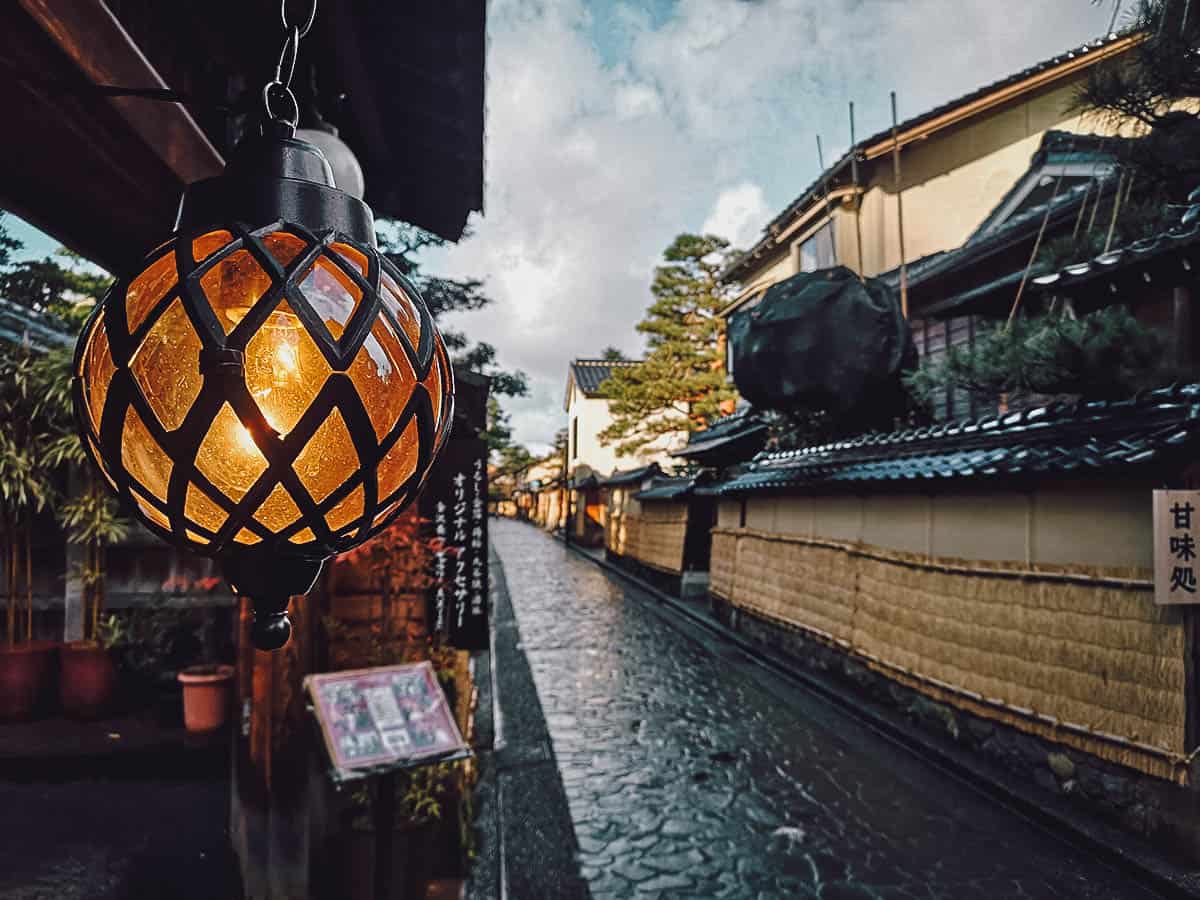
Visit a Museum
If you like modern art, then make your way to the 21st Century Museum of Contemporary Art. As its name suggests, it showcases the work of contemporary artists from Japan and across the globe.
The museum is noted for its unique circular building and interesting permanent installations, none more famous perhaps than Leandro Erlich’s “Swimming Pool”. You may have seen it on social media. It gives the impression that people are walking underwater.
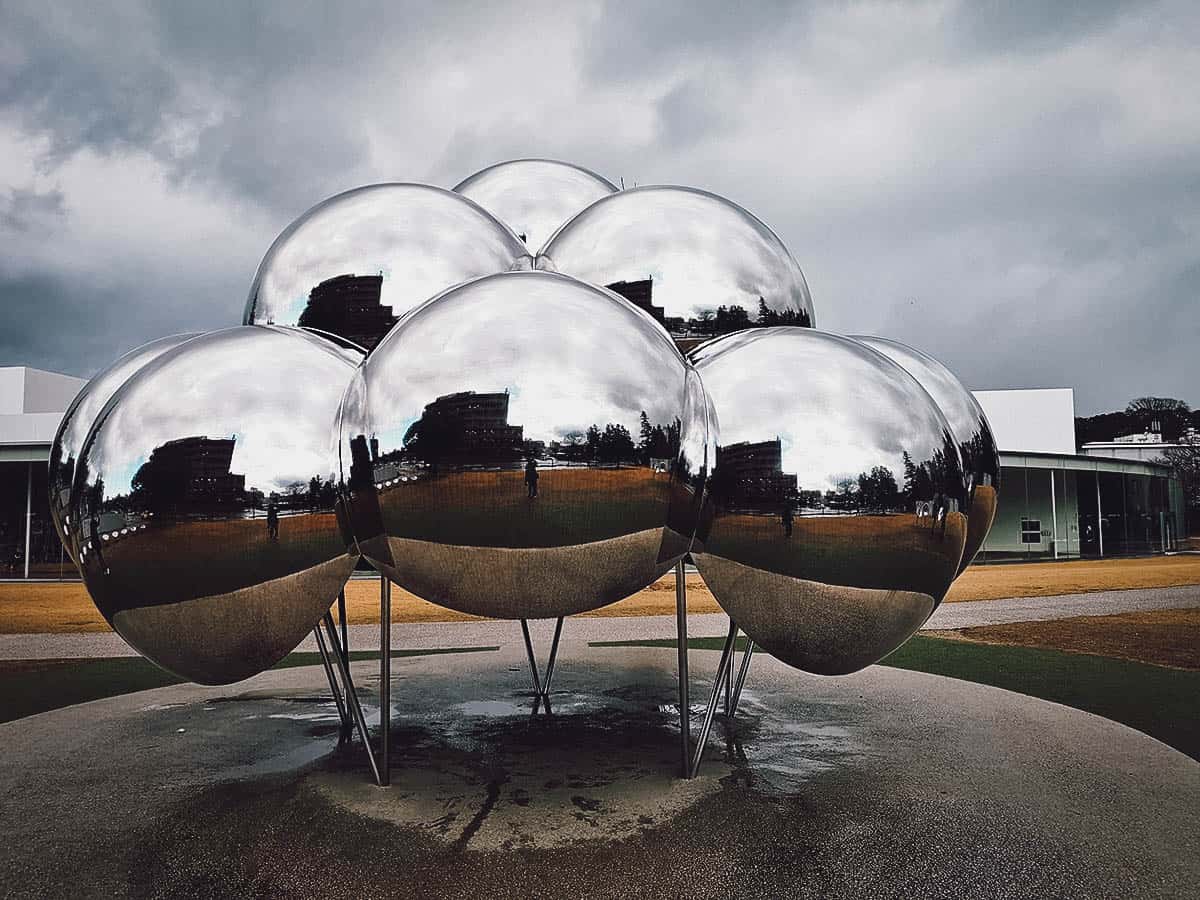
Another interesting museum you can visit is the DT Suzuki Museum, a space dedicated to the life of Daisetsu Teitaro Suzuki. DT Suzuki was a prominent philosopher who was instrumental in introducing Japanese Zen philosophy and Zen Buddhism to the West.
Comprised of a main exhibit hall, a garden, and this cube-shaped contemplative room that looks out onto the water, there isn’t much to see at the museum but I guess that’s the point. True to the teachings of Master Suzuki, it’s an uncluttered space that invites quiet contemplation.
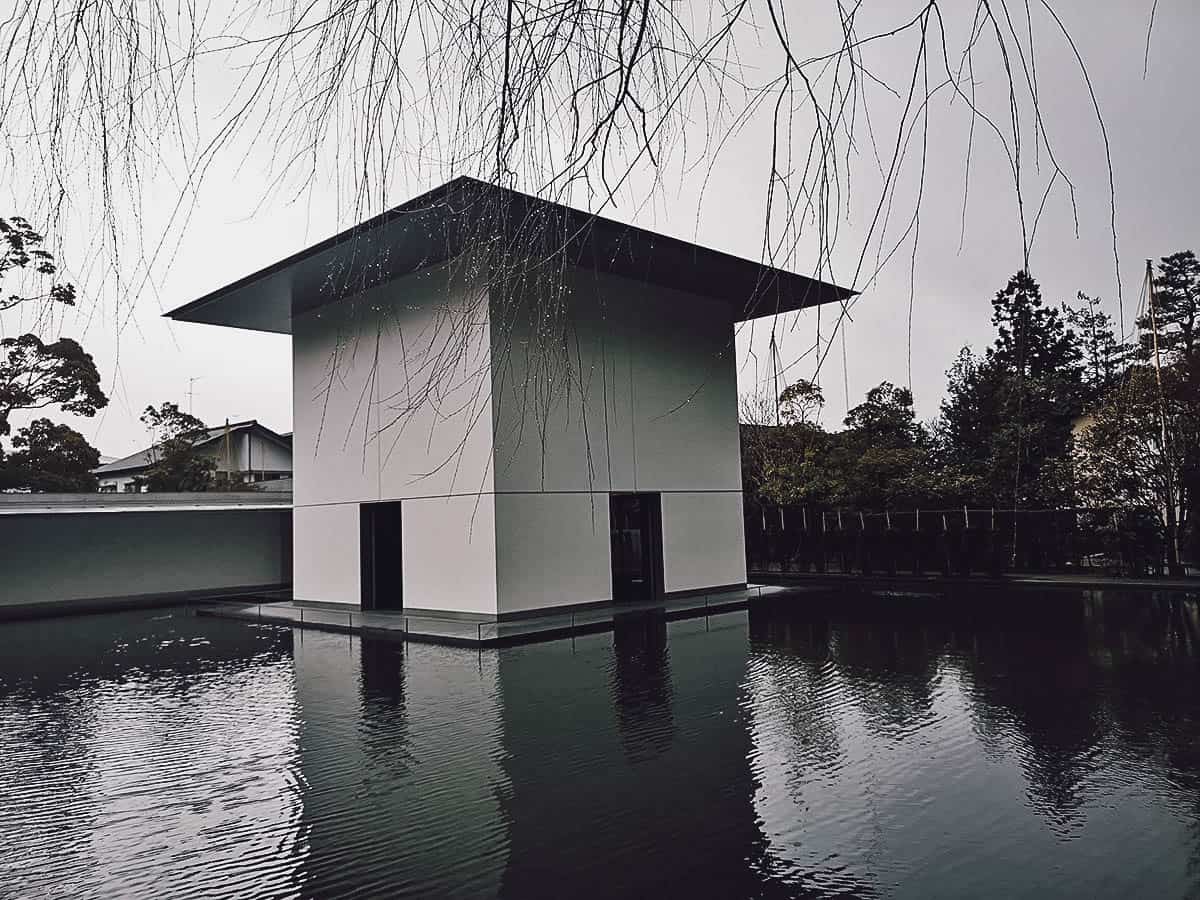
Eat the Freshest Seafood at Omicho Market
Kanazawa borders the East Sea so it’s home to some of the freshest seafood in Japan, much of which ends up here at Omicho Market.
Similar to Osaka’s Kuromon Ichiba Market and Kyoto’s Nishiki Market, Omicho is a covered market with over 200 shops and restaurants selling fresh produce and seafood fished from the Sea of Japan. It’s been Kanazawa’s largest fresh food market since the Edo period.
I’ve been to Omicho Market at different times of the day and it never got more crowded than what you see in the picture below. It felt like an authentic market, unlike Kuromon Ichiba, Nishiki, and Tokyo’s Tsukiji Market which have all become too touristy over the years.
Along with live seafood, there are plenty of restaurants and Japanese food stalls at Omicho so you can snack on things like roast crab, unagi, and zuke while making your way from one end of the market to the other.
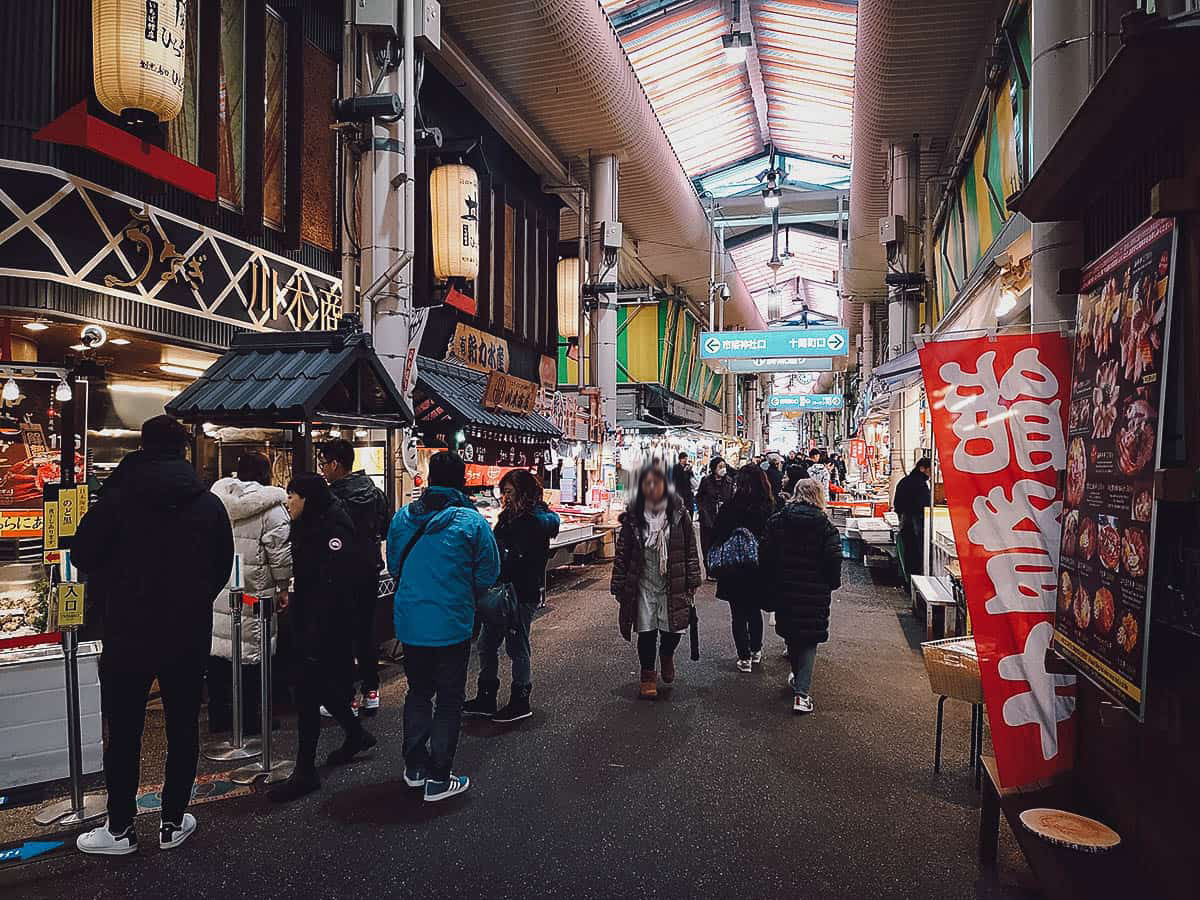
Experience a Tea Ceremony
Enjoying a tea ceremony, like savoring a kaiseki meal or staying at a ryokan, is a great way to experience the traditional side of Japan. While tea ceremonies are available throughout the country, Kyoto, Uji, and Kanazawa are considered prime destinations for experiencing Japan’s tea culture.
People looking for an authentic experience can enjoy a tea ceremony at Koko-an, the historic tearoom where the wabi-cha tea ceremony was introduced to Kanazawa. This is a more formal ceremony hosted by Sokyu Nara, deputy tea master of the Urasenke style.
For a less formal experience, you can visit Gyokusen-Inmaru Garden to enjoy tea and wagashi with a view of their small but beautiful landscaped garden. Kanazawa is famous for its wagashi made from different ingredients like mochi, azuki bean, and fruit.

Built in 2015, Gyokusen-Inmaru Garden is located on the grounds of Kanazawa Castle and features a central pond with a circular walking path.
This picture was taken in winter but the garden looks much more verdant in other seasons. You can take a stroll through the garden or enjoy this view while sipping matcha from the teahouse.
You can also enjoy a similar tea ceremony at Kenrokuen, which you can book through Get Your Guide.
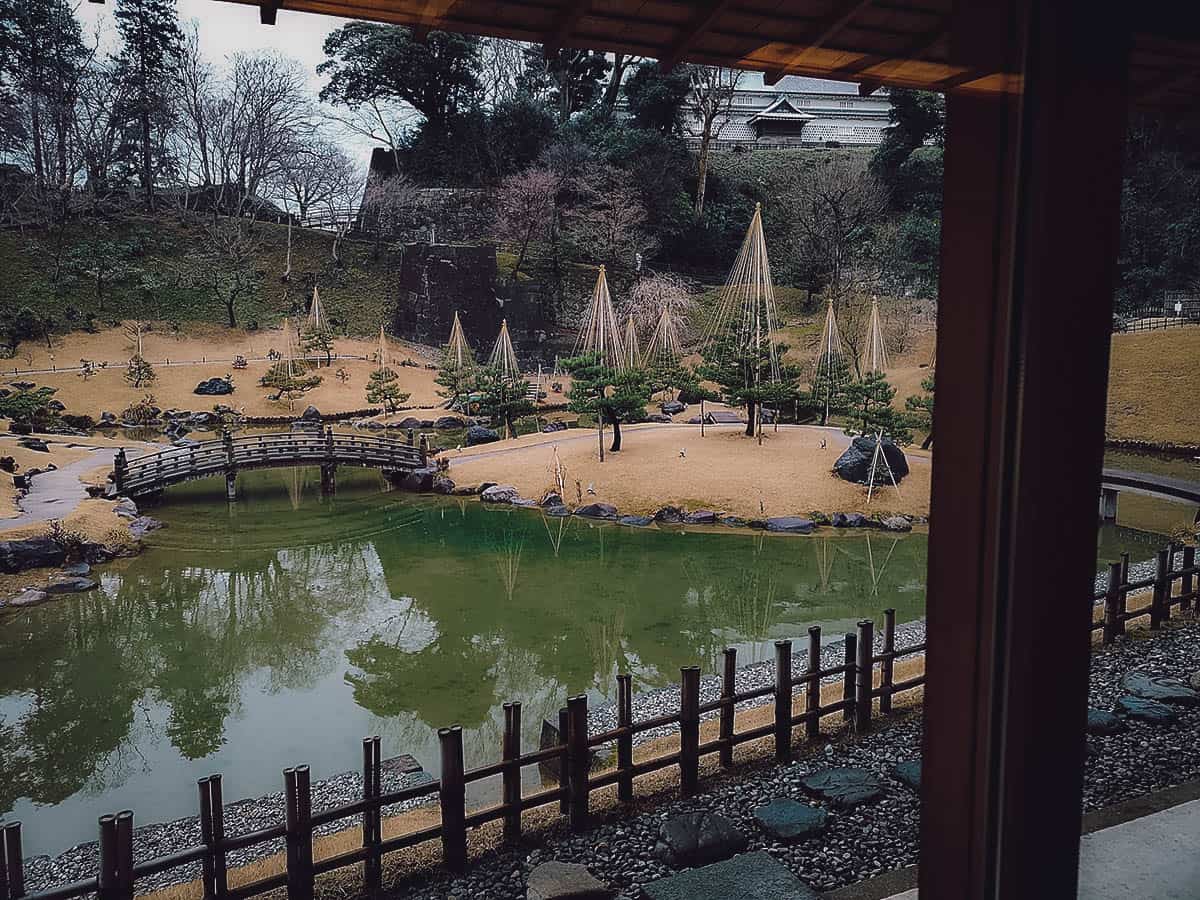
Enjoy a Cultural Experience
An authentic tea ceremony is one of the most culturally enriching experiences you can have in Japan. But there are other experiences you may want to try as well, like learning the art of kintsugi to fix broken pottery (pictured below), or decorating lacquerware with maki-e techniques. Being a city deeply rooted in tradition, Kanazawa is an ideal place for such experiences.
If you’d like to have more culturally immersive experiences in Kanazawa, then you need to check out Wabunka.
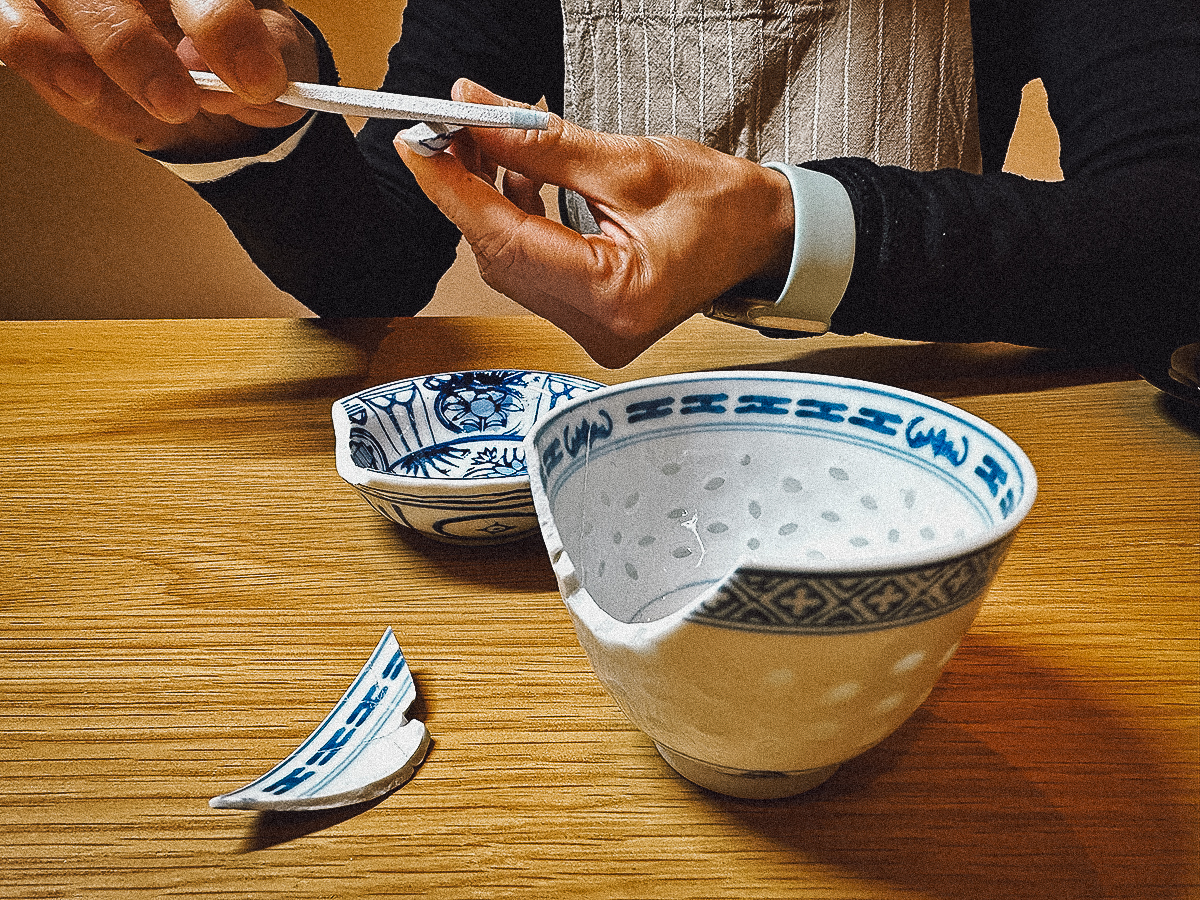
Take a Cooking Class
I’ve taken cooking classes in many different cities around the world but some of the most fun I’ve had was in Japan. Stomping on dough to make udon in Tokyo remains a core travel memory for me!
If you’d like to learn how to make favorite Japanese dishes like gyoza, sushi, or takoyaki, then you’ll have several cooking classes to choose from on airKitchen. A few of them cater to vegans and vegetarians as well.
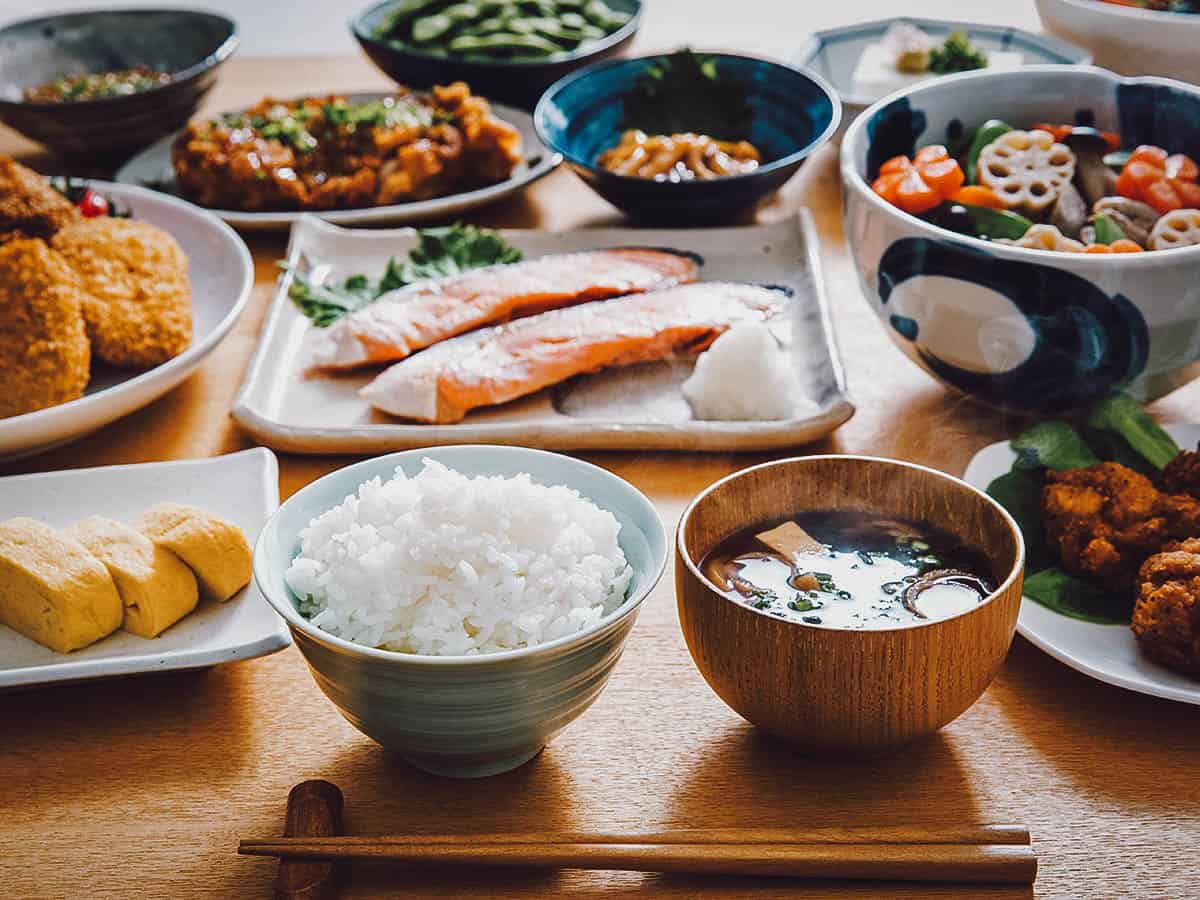
Photo by kazoka via Shutterstock
DAY TRIPS FROM KANAZAWA
All the day trip destinations recommended here are accessible with the Takayama-Hokuriku Area Tourist Pass. If you’re planning on exploring the Chubu region, then the pass could be a great investment. More on that in the FAQs section of this article.
Shirakawa-go
Thanks to social media, Shirakawa-go has become one of the most popular destinations in the Chubu region. And with good reason! This remote village could very well be the most beautiful traditional village in Japan, especially at the height of winter.
Located in the remote Shogawa River Valley in Gifu prefecture, Shirakawa-go is a UNESCO World Heritage Site famous for its traditional gassho-zukuri farmhouses. The region often sees up to two meters of snow so the roofs of these farmhouses are built at a steep angle to allow heavy snow to slide off in winter.
Shirakawa-go is just a bus ride away from Kanazawa. If you’d prefer to go on a guided tour, then you can book one through Get Your Guide (option 1 | option 2 | option 3).

Hida Takayama
Hida Takayama (or simply Takayama) is a lovely small city often paired with trips to Shirakawa-go. Located in Gifu prefecture, it’s famous for its beautifully preserved old town and for hosting one of Japan’s most beautiful festivals – Takayama Matsuri.
Like Shirakawa-go, Takayama can be reached by bus from Kanazawa. If you’d prefer to go on a guided tour, then you can book one through Get Your Guide (option 1 | option 2). Both options take you to Takayama and Shirakawa-go.
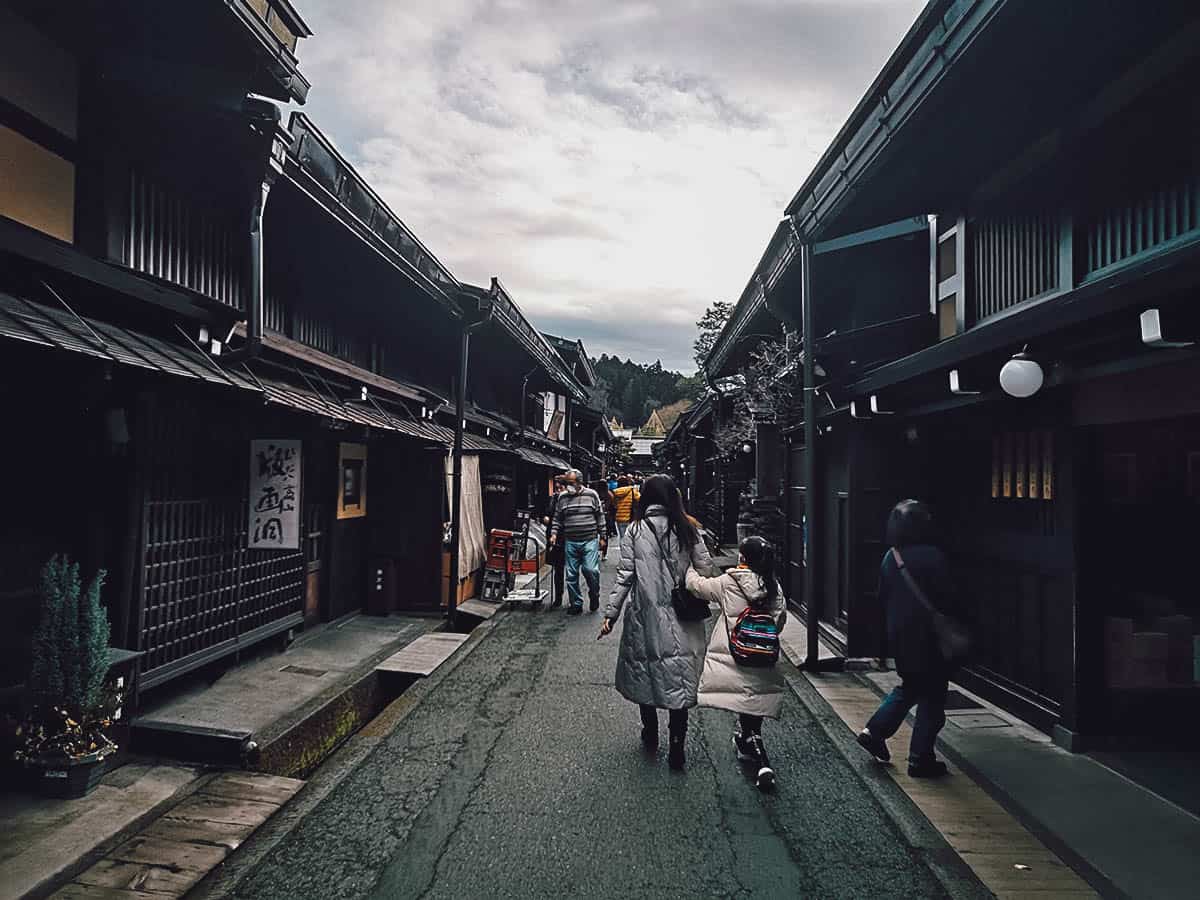
Fukui
If you’d like to go off the beaten path in Japan, then there’s no better destination than Fukui. I visited the Chubu region on a press trip a few years ago and our guide described it as the least visited prefecture in Japan. How intriguing!
Just because Fukui gets fewer tourists doesn’t make it unworthy of a visit. Some of the more interesting attractions in Fukui include Awara Onsen, Maruoka Castle, and this spectacular series of basalt cliffs known as Tojinbo.
The prefecture is also home to Fukui Prefectural Dinosaur Museum, one of the best dinosaur museums in the world. If you’re traveling with kids, then you’ll definitely want to make a stop there.
You can visit Fukui by train from Kanazawa, or if you’d prefer, you can go by guided tour (option 1 | option 2).
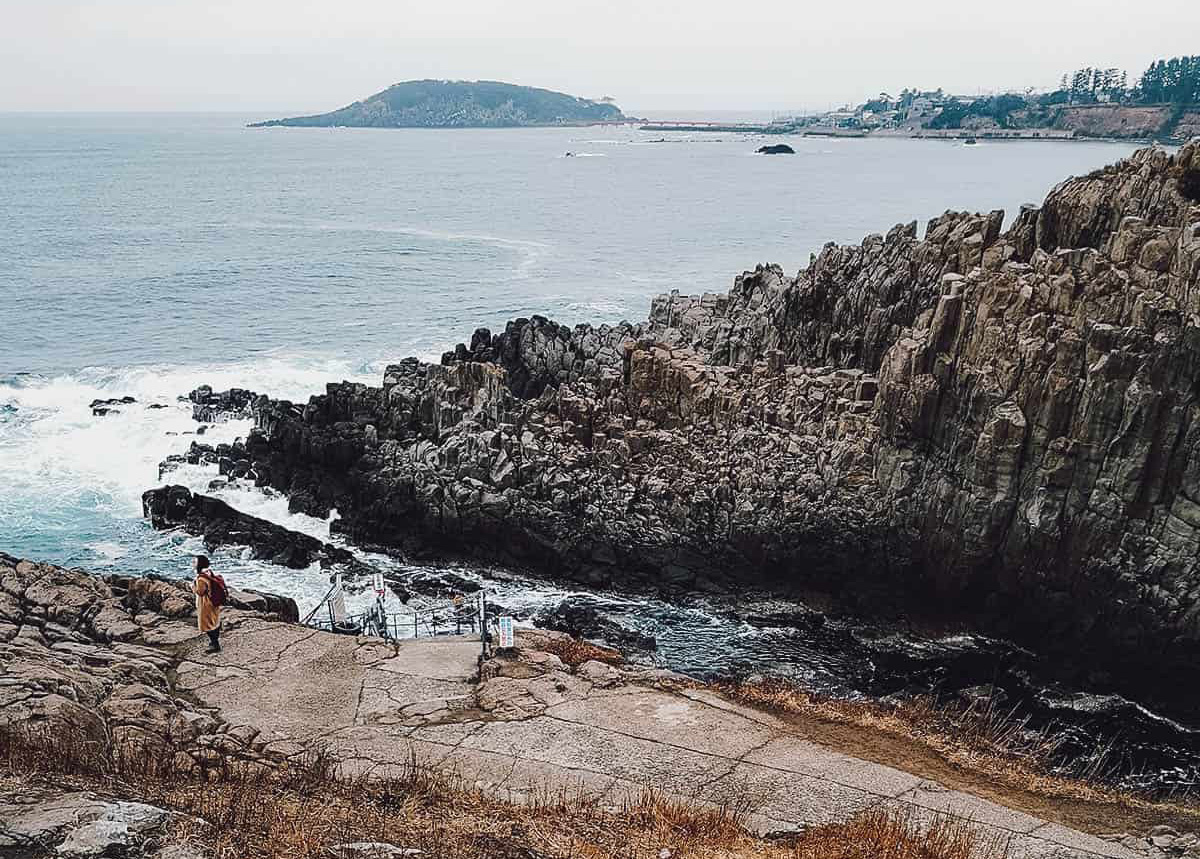
Gokayama
If you’d like to see the gassho-zukuri farmhouses but loathe crowds, then Gokayama is a great alternative to Shirakawa-go. A UNESCO World Heritage Site in Toyama prefecture, it’s harder to get to which means far fewer tourists.
You can visit Gokayama using the Takayama-Hokuriku Pass but it may be easier to book a guided tour (option 1 | option 2). Both options will also take you to Shirakawa-go.
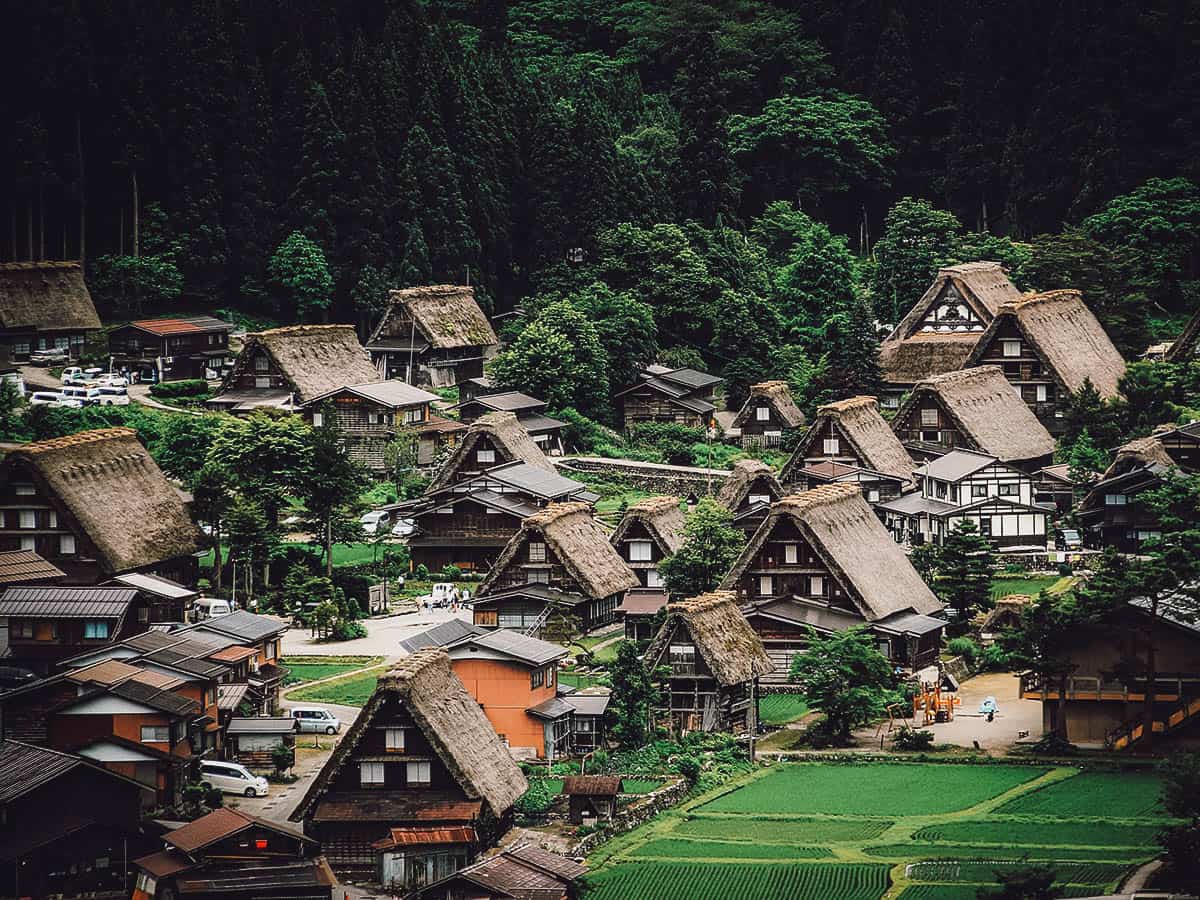
Photo by Aranami via Shutterstock
VISIT KANAZAWA FAQs
Is Kanazawa worth visiting?
Yes, absolutely, especially if you prefer the traditional side of Japan. Small and laid back, it doesn’t have the energy of big cities like Tokyo and Osaka, but for some people, that may be a good thing.
How many days should I stay in Kanazawa?
One full day should give you enough time to visit the top attractions in Kanazawa.
Is it easy to get around in Kanazawa?
Kanazawa doesn’t have a metro system but most people probably won’t need it. The city’s top attractions are located within a 3 km (1.9 miles) radius so it’s easy to get around on foot.
Is the Takayama-Hokuriku Area Tourist Pass worth it?
Yes, it can be, but it depends on how often you use it. This is true for any JR Pass.
The Takayama-Hokuriku Area Tourist Pass is a rail pass that allows tourists unlimited travel in central Japan for five consecutive days. You can use it to travel by JR train between cities in the Chubu region (Kanazawa, Takayama, Nagoya, Fukui, etc), and to Osaka and Kyoto in the Kansai region. You can also use it to travel by bus to Shirakawa-go and Gokayama.
If you’re looking to do a deep dive into the Chubu region, then the Takayama-Hokuriku Pass can save you money. You can use a JR fare calculator to estimate how much traveling by train will cost you. If it’s worth it, then you can purchase one in advance through Klook.
THE FINAL SAY
I wouldn’t say I loved Kanazawa, but I’m happy I’ve been. It really is like a small version of Kyoto but with fewer tourists.
I’ve been to Kanazawa twice, both in the soppier days of winter, so I’d like to go again during the sakura or autumn seasons. Kenrokuen must be stunning then. There’s certainly enough to do in the city to merit another visit, especially when it’s part of a larger Chubu trip.
Disclosure
This Kanazawa travel guide contains affiliate links through which we’ll earn a small commission if you make a booking or purchase at no additional cost to you. As always, we only recommend products and services that we’ve used ourselves and can personally vouch for. We appreciate your support as it helps us make more of these free travel guides. Arigato gozaimasu!

